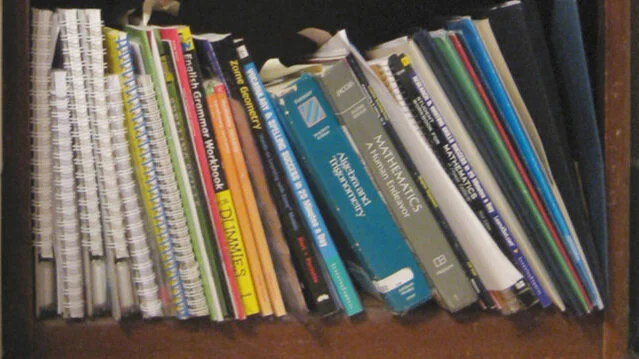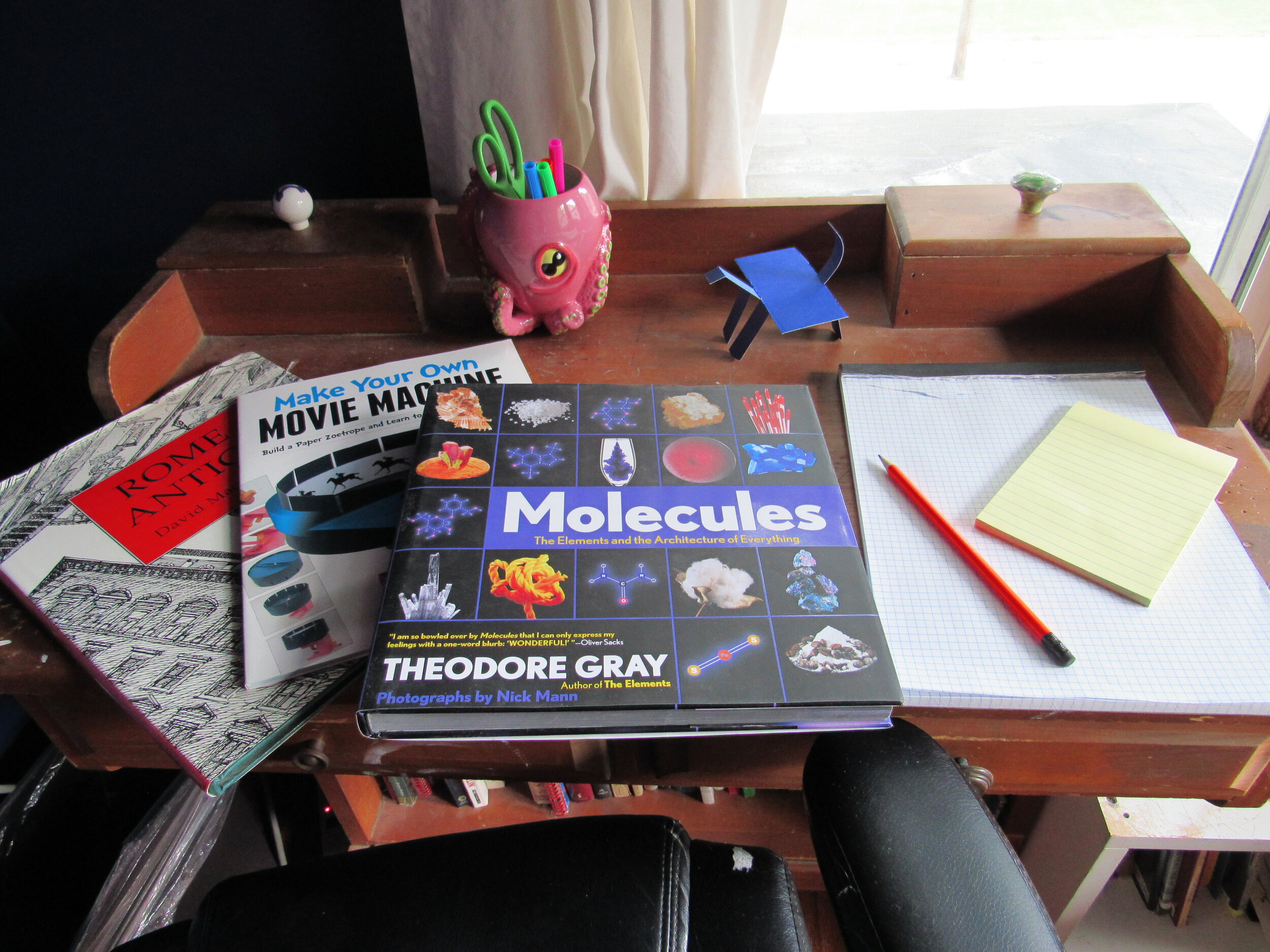At some point in your kids' homeschool career, you'll probably have to describe what they've been doing and learning to the outside world.
In New York State, you need to create regular reports on your child’s work to submit to the school district.
If you’re talking to friends or relatives, you might want to explain how homeschooling differs from public school.
If your child is returning to traditional school or preparing for college, you’ll want to document their accomplishments for administrators or admission officials.
The best way is to describe your children's activities using the same terms used by teachers. I think of it as "Educationese."
Talk Like a Teacher
If you're not familiar with education jargon, you can quickly get up to speed by flipping through the kind of school review workbooks found at discount stores or bookshops.
Scan the table of contents or look for the topic listed on the page to find out what categories your kids' activities fall under.
For instance, "identifying the parts of a whole" is fractions. For a fifth-grader, listening to or telling a story comes under the heading of "narrative fiction."
Use State and National Standards
Another way to figure out how to describe what your kids do all day is to browse through the schools' own guidelines. But don't be intimidated by them.
Unlike the schools, you don't have to design your academic year around them. Instead, use them to see how to classify things your child already knows or is in the process of learning.
Your state Department of Education learning standards in various subjects are usually available online. New Yorkers can check out the site EngageNY. These guidelines are often broad enough to describe any type of learning activity, from worksheets to hands-on projects to field trips, etc.
National standards such as the Common Core are still in use in one form or another in many states. They are much more detailed — but again, you don’t need to follow them! Just skim them to get a glimpse into how schools categorize what they hope students are learning in the classroom.
Don't forget to include all the "usual activities" your child may have been involved with while still in school, such as:
afterschool enrichment programs
Scouts or other youth groups
organized sports, or dirt-bike racing
an afterschool job.
They can be used to fill in many subject areas.
Educationese Examples
Below are some of the ways you can describe your activities in terms of one or more school subjects:
Learning to tell the day and time is math.
Anything your child lines up, stacks or counts is a math manipulative.
Blocks, LEGOs, and other building toys count as geometry, art, architecture and engineering.
Playing or helping you cook with measuring cups and spoons is math and chemistry. (Especially if it changes states from solid to liquid or gas -- and especially if anything blows up!)
Any time your child forms a hypothesis and tests it out they are practicing hands-on science. Just try to get them to make a record (“lab notes”) of what they do!
Chess and other games of strategy are logic; card games are probability. File both under math.
A visit to the dentist or doctor is health. So is learning how to read the nutrition labels on food containers.
Talking about stories in the news is current events. Attending a Memorial Day service or accompanying you into the voting booth is civics. Both count as social studies.
Anything they read or write is language arts. Anything. So is being read to, or listening to a storyteller. Watching a movie based on a book is literature. The same with stage plays. If it's a movie with an original screenplay, it's film studies.
Building a website, designing an app, programming a robot, or upgrading the family PC is computer science. Helping grandma figure out how to get Zoom to work on her iPad is hands-on technology.
Starting a neighborhood dog-walking service, raising chickens to sell the eggs at the farmer’s market, or selling hand-painted miniatures for role-playing games on Etsy is economics, marketing, and business math.
Baking bread or repairing a lawnmower engine are “practical arts” (once called home economics or shop). They also include decorating cupcakes, styling a room, sewing a Halloween costume, or designing and constructing a bookcase. Some of these also qualify as materials engineering or fashion, interior, or industrial design.
A walk through the park to identify trees and plants is nature study. Collecting tadpoles to raise in a bucket at home is biology. Staying up late to look for comets and shooting stars is astronomy.
Stopping by a construction site or playing with toy trucks is physics. Taking a trip to an amusement park, or building a roller coaster with K'Nex or a Ferris wheel with Lego is, too.
A stop at any tourist attraction, from Niagara Falls to the World's Largest Ball of String, is a field trip. Visiting the local bakery, firehouse, television studio, farm, or factory also qualifies.
Touring an art museum or gallery is art history. Walking around town with a guidebook, camera, or sketchbook and making note of outdoor sculptures, murals, and architectural landmarks counts as urban planning and geography. If the built landscape has been changed by recent demonstrations, it could also count as current events.
For that matter, any activity that gets your kids out of their chairs for a reasonable amount of time, from a dance to a walk around the block, is physical education. Likewise swimming, bike riding, roller skating, or just running around on the lawn.
In fact, if your state requires you to keep track of how many hours your kids are learning, you should have no trouble meeting the minimum.
When you look at it through a teacher’s eyes, everything is a learning opportunity!
Need More Help?
Take a look at my sample paperwork to see one way to meet New York State homeschooling regulations without using a pre-packaged curriculum.
For more details, read my blog post on homeschooling in New York.
Want advice and support from a homeschool veteran? Contact me about individual consulting for homeschooling families.
This page may contain affiliate links. Thanks for helping me to keep producing great learning resources for students and families!






